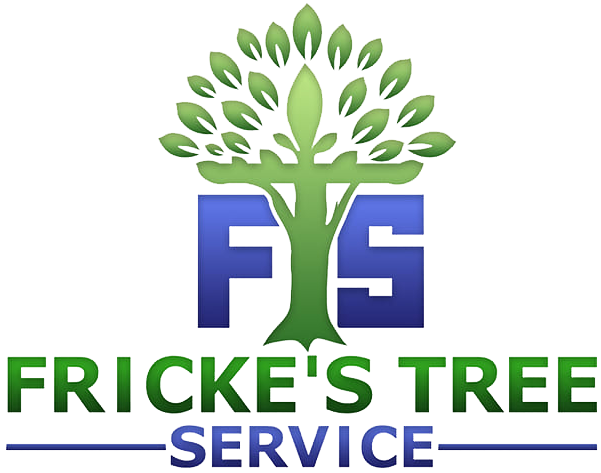Fricke's Tree Service
When to Trim Your Trees for Healthy Growth
Best Time to Trim Trees
Understanding Tree Trimming
Tree trimming is an essential part of maintaining the health and aesthetics of your landscape. Knowing the best time to trim trees can significantly impact their growth, appearance, and overall health. In this post, we will explore the optimal times for tree trimming, the benefits of proper timing, and tips for effective tree care. Proper tree maintenance not only enhances the beauty of your property but also contributes to the longevity of the trees themselves, ensuring they remain a vital part of your landscape for years to come.Why Timing Matters
Timing is crucial when it comes to tree trimming. Trimming at the wrong time can lead to a variety of negative consequences that can affect the tree's health and your landscape's appearance. Some of the potential issues include:- Increased susceptibility to pests and diseases, which can spread quickly if not addressed.
- Stunted growth, as improper trimming can hinder the tree's natural development.
- Unattractive appearance, which can detract from the overall beauty of your yard or garden.
- Increased stress on the tree, making it more vulnerable to environmental factors.
Seasonal Considerations for Tree Trimming
Spring Trimming
Spring is often considered a prime time for tree trimming. As trees begin to bud and grow, trimming can encourage healthy growth. However, it’s essential to consider the following:- Trim before new growth starts to avoid damaging tender buds that are just beginning to form.
- Focus on removing dead or diseased branches to promote overall health and vitality of the tree.
- Be cautious with flowering trees, as trimming too early can remove potential blooms.
Summer Trimming
Summer trimming can be beneficial for certain types of trees. Here’s what to keep in mind:- Summer is ideal for shaping trees and controlling their size, allowing for better light penetration and air circulation.
- It’s best to avoid heavy pruning during this season, as it can stress the tree and lead to excessive sap loss.
- Monitor for any signs of disease or pests and address them promptly to prevent further issues.
- Consider trimming after the peak of summer heat to minimize stress on the tree.
Fall Trimming
Fall is a transitional period for trees. While some may argue against trimming in the fall, there are benefits:- Trimming in early fall can help prepare trees for winter, allowing them to conserve energy.
- Removing dead branches can prevent them from breaking off during winter storms, which can cause damage to the tree and surrounding areas.
- However, avoid trimming late in the season to prevent new growth that could be damaged by frost, which can weaken the tree.
Winter Trimming
Winter is often the least popular time for tree trimming, but it has its advantages:- Trees are dormant, making it easier to see their structure and identify areas that need attention.
- Trimming during dormancy can reduce stress on the tree, as it is not actively growing.
- It’s an excellent time for pruning deciduous trees, as they are bare and easier to manage.
- Winter trimming can also help prevent the spread of certain diseases that are more active in warmer months.
Types of Trees and Their Trimming Needs
Different types of trees have varying needs when it comes to trimming. Here’s a breakdown:Deciduous Trees
Deciduous trees, such as oaks and maples, benefit from trimming in late winter or early spring. This timing helps promote healthy growth and minimizes the risk of disease. Proper trimming can also enhance the tree's shape and structure, making it more resilient to environmental stressors.Evergreen Trees
Evergreens, like pines and spruces, can be trimmed in late spring or early summer. This timing helps maintain their shape and encourages new growth. Regular trimming can also prevent overcrowding, allowing each branch to receive adequate sunlight and nutrients.Flowering Trees
Flowering trees, such as cherry and dogwood, should be trimmed after they bloom. This ensures that you don’t remove any buds that will produce flowers, allowing for a vibrant display in the spring. Additionally, trimming after blooming can help shape the tree for future growth.Signs Your Trees Need Trimming
Recognizing when your trees need trimming is essential for their health. Look for these signs:- Dead or diseased branches that can pose a risk to the overall health of the tree.
- Overgrown branches that obstruct views or pathways, creating safety hazards.
- Branches rubbing against each other, which can cause wounds and invite pests.
- Weak or split branches that may fall and cause damage to property or injury to people.
Tips for Effective Tree Trimming
To ensure your tree trimming is effective, consider the following tips:- Use sharp, clean tools to make clean cuts, which helps the tree heal faster.
- Follow proper pruning techniques to avoid damaging the tree and to promote healthy growth.
- Don’t remove more than 25% of the tree’s canopy in one season to prevent shock.
- Consider hiring a professional for large or complex trees, as they have the expertise and equipment to do the job safely.
- Always wear protective gear when trimming to ensure your safety during the process.
Conclusion
Knowing the best time to trim trees is vital for maintaining their health and beauty. By understanding the seasonal needs of different tree types and recognizing the signs that indicate trimming is necessary, you can ensure your trees thrive. Regular maintenance not only enhances the aesthetic appeal of your landscape but also contributes to the longevity and vitality of your trees. For expert tree trimming services, reach out to us for an estimate using this link. Our team is ready to assist you in keeping your trees healthy and beautiful all year round.SHARE POST
RECENT POSTS
Interested in Our Services?
Get in touch today to discuss your next project and we will happy to answer any questions and provide you with a no-obligation FREE Estimate.







